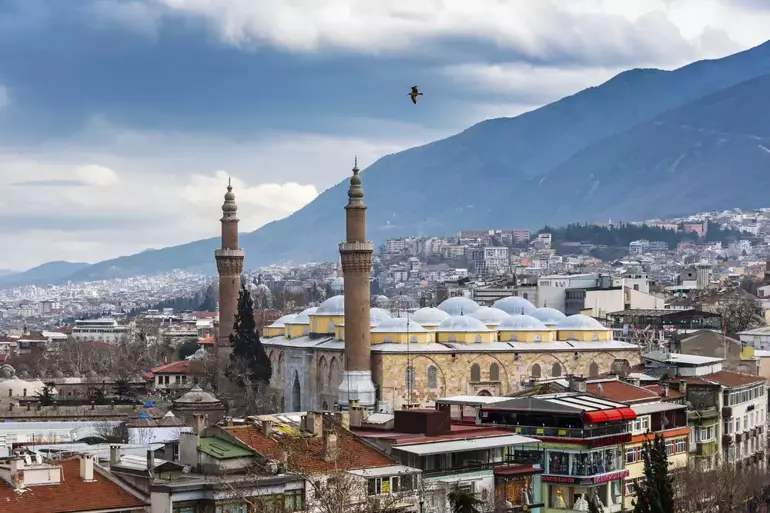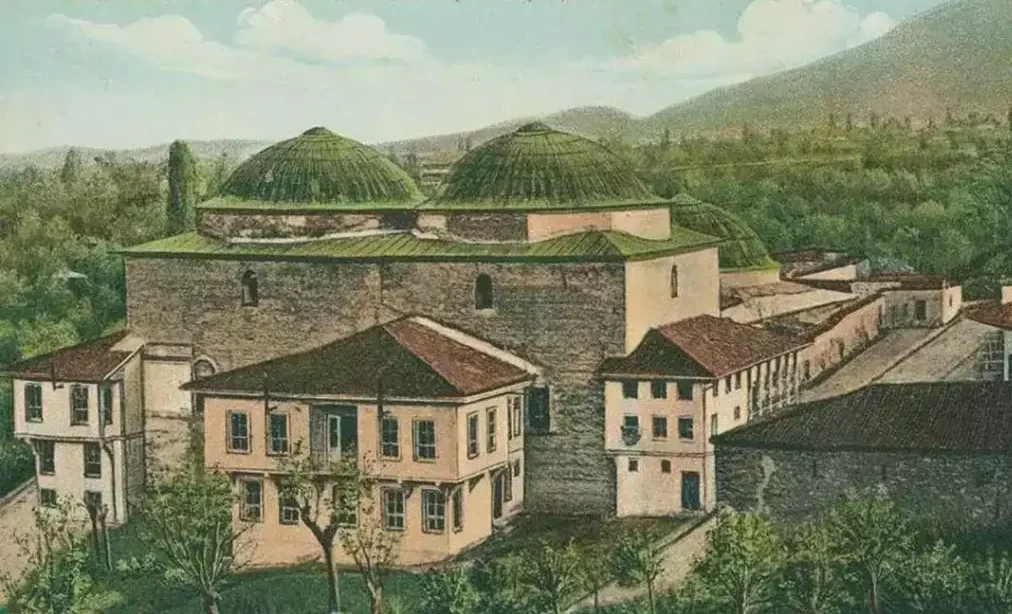Bursa , which went down in history as the first capital of the Ottoman Empire,
has great historical and cultural importance. In this article, we will take a detailed look at the history, cultural heritage, touristic places and importance of Bursa, the first capital of the Ottoman Empire.
Historical Origins of Bursa
The historical roots of Bursa date back to very old times. Bursa, an important city of the Bithynia Kingdom in ancient times, also had a strategic position in the Roman and Byzantine periods. However, the real rise of the city was initiated by Osman Gazi, the founder of the Ottoman Principality in the 13th century.
Bursa as the First Capital of the Ottoman Empire
Osman Gazi, the founder of the Ottoman Principality, made Bursa the capital and the center of the empire. Conquered by the Ottomans in 1326, Bursa became an important economic, military and cultural center as the capital of the empire. The conquests and construction activities in the early periods of the Ottoman Empire enabled Bursa to develop rapidly.
The Ottoman Principality under the leadership of Osman Gazi began to expand in different parts of Anatolia and the first steps were taken to conquer Bursa in 1302. However, Bursa came under Ottoman control and became the capital in 1326. From this date on, the Ottomans declared Bursa as the center of their empire.
The conquest of Bursa by the Ottomans was a significant turning point for the empire. The city’s strategic location, agricultural potential and proximity to trade routes made it an ideal capital for the Ottomans. Bursa’s natural resources and economic potential contributed greatly to the economic development of the empire.
As the first capital of the Ottoman Empire, Bursa became an important center not only economically but also militarily and culturally. The Ottomans used Bursa as a strategic base for the defense of their empire and ensured its security by building castles around the city. In addition, the mosques, madrasahs, baths and complexes built in Bursa, the first capital of the Ottoman Empire, helped revitalize the city’s cultural and religious life.
The conquests and construction activities in the early periods of the Ottoman Empire enabled Bursa to develop rapidly. The city expanded with new settlements, trade revived and economic activities increased. Infrastructure investments and architectural projects made during this period enabled Bursa to become a modern city.
As a result, Bursa, as the capital of the Ottoman Empire, became a symbol of the empire’s early successes and development. By making Bursa their center, the Ottomans paved the way for the empire’s strengthening and expansion. The conquests and construction activities that took place during this period were an important part of the Ottoman Empire’s founding period and shaped Bursa’s historical and cultural heritage.
Bursa’s Ottoman Period Architectural Heritage
Bursa is one of the most important centers of the architectural heritage of the Ottoman period. The city contains the most beautiful examples of Ottoman architecture. Especially the mosques, madrasahs, baths, inns and social complexes built during the Ottoman period constitute the historical texture of Bursa. Structures such as the Ulu Mosque, Yeşil Mosque, Yeşil Türbe and Koza Han are an important part of the cultural and historical heritage of the city.
Tourist Places of Bursa, the First Capital of the Ottoman Empire
Bursa, the first capital of the Ottoman period, is famous for its natural beauty as well as its historical and cultural richness. Uludağ is one of the most popular ski resorts in Turkey and plays an important role in winter tourism. In addition, the historical baths, hot springs, tombs, museums and bazaars in the city attract the attention of visitors. Bursa’s delicious cuisine and famous Iskender kebab also make the city a tourist attraction.
Economic and Cultural Importance of Bursa
Bursa is an important economic and cultural center of Turkey today, as it was during the Ottoman period. It draws attention with its activities in sectors such as industry, agriculture, textile and automotive. In addition, the universities, cultural events and festivals in the city show that Bursa has a lively and dynamic cultural life.
Bursa has gone down in history as the first capital of the Ottoman Empire and has been an important center throughout history. With its historical and cultural richness, architectural heritage, touristic places and economic importance, Bursa is one of the most important cities in Turkey. This rich heritage, dating from the Ottoman period to the present day, emphasizes the importance and value of the city from the past to the present.

Other Capitals of the Ottoman Empire
1. Edirne
After Bursa, the first Ottoman capital, Edirne became the second capital. In 1365, Edirne was conquered by the Ottomans and served as the capital for a period. Edirne had a strategic location in terms of strengthening the Ottoman Empire’s dominance in the Balkans and managing its political relations in Europe. During this period, Edirne hosted important works of Ottoman architecture. The Selimiye Mosque in particular is an important part of Edirne’s historical and cultural heritage.
2.Istanbul
After Edirne, the capital of the Ottoman Empire became Istanbul. Istanbul was the capital during the most glorious periods of the Ottoman Empire and the period when it achieved its greatest expansion. With the conquest of Istanbul by Fatih Sultan Mehmet in 1453, the city became the center of the Ottoman Empire. Istanbul played an important role as the political, economic, cultural and religious center of the Ottoman Empire. Topkapi Palace, Hagia Sophia Mosque, Sultanahmet Mosque and many other historical monuments constitute the rich heritage of Istanbul.
3.Ankara
The first capital of the Ottoman Empire was Bursa, while the last capital was Ankara. With the establishment of the Republic of Turkey in 1923, the function of the capital was transferred from Istanbul to Ankara. Ankara was made the capital for political reasons and because it is geographically more central to Turkey. Ankara plays an important role as the political and administrative center of Turkey. After the declaration of the Republic, the modernization and development of Ankara accelerated. Anıtkabir, the Turkish Grand National Assembly, the Atatürk Forest Farm and various museums are important symbols of Ankara.
In this way, we can list the capitals of the Ottoman Empire throughout history, starting from Bursa, then Edirne, Istanbul and Ankara. We have listed the first capital of an empire that lasted for centuries, starting from its last capital.
